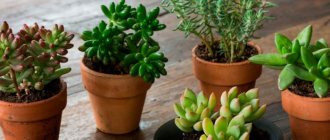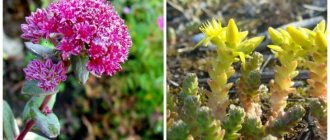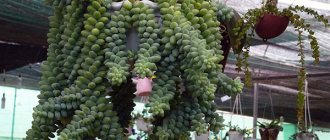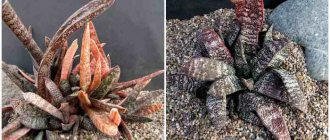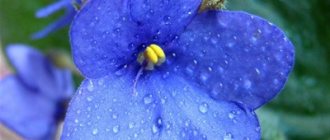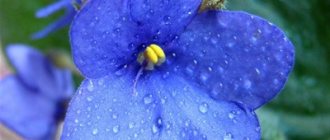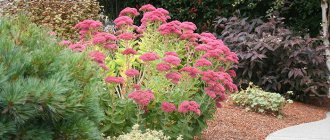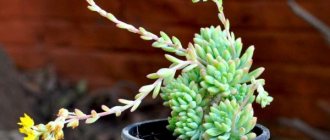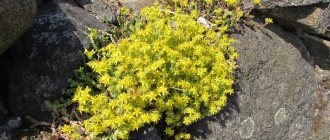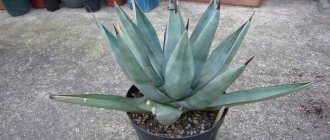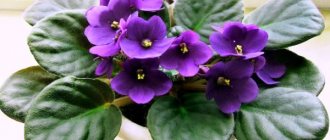The numerous genus Sedum or sedum includes about 500 species of hardy and diverse succulents from the Crassulaceae family.
This group of plants is simply unique in every way. It combines annual and perennial species, tropical and frost-resistant, evergreen and winter-withering, miniature ground covers and taller forms. Some of them grow in mountainous areas, others can be found in dry meadows and forest clearings.
Growing and caring for sedum in open ground will delight any gardener! Its decorative varieties are distinguished by their extreme unpretentiousness and high decorative qualities. For example, ground cover varietal forms from spring to late autumn create a magnificent carpet on the site in all shades of pink, red, yellow, green and even purple-violet.
These are unsurpassed plants for creating rock gardens, gravel gardens and alpine slides, compositions with saxifrage, alternanthera, and juveniles. Tall forms of sedum are magnificent in flower beds, flower beds, border plantings, against the background of conifers, perennial asters, helenium, marigolds, and lobularia.
Description of succulents of the genus Sedum and its features
Representatives of the genus Sedum were first officially described by Carl Linnaeus in 1753. There he introduced 15 species. Gradually, other plants were included in the Sedum genus, which led to their number exceeding 600 species. Scientists later divided Sedum into several separate genera, and even then Sedum occupies a third of the total number of species in the Crassulaceae family, although it has been reduced to about 420 species.
The degree of morphological diversity of Sedum is so great that scientists are still arguing regarding their taxonomy and cannot structure representatives of the genus Sedum into tribes and clades. There is even such a term as the “Sedum problem”, which emphasizes this situation in the taxonomic hierarchy of the Sedums.
The scientific name of the genus Sedum comes from the Latin. sedare - to pacify (the fleshy leaves of some species have analgesic properties). The common name Sedum comes from the Ukrainian Ochistok , due to the plant's use as a medicinal and cleansing agent.
Succulents of the genus Sedum can be found on all continents except Australia and Antarctica. For example, there are currently about 55 European species.
Description of plants
The genus Sedum includes annual, biennial and perennial creeping herbs, subshrubs and shrubs. They are characterized by fleshy leaves and stems. These are very hardy crops that grow in mountains, deserts and grasslands. Sedum even grows on sand dunes in coastal areas.
Conventionally, Sedums are divided into two groups - ground cover and tall crops.
Dimensions
Plant sizes vary significantly from species to species. The low-growing Sedum can spread up to a meter wide, but only grows a few centimeters tall. Vertically growing varieties can grow up to a meter in height and approximately 50 cm in circumference.
Leaves
Some types of succulent have hairy leaves, while others have shiny and waxy leaves. In most varieties, the leaves grow in clusters around stems or shoots. they vary greatly in shape and size depending on the species - from bean-shaped to spatulate with rosette forms.
Foliage color can range from light green to red and purple. Some plants have solid green foliage, while others have variegated foliage. Some change colors depending on the time of year or when under stress.
Bloom
Most species of Sedum have star-shaped, five-petaled flowers. The flowering time of succulents lasts from early spring or early summer until mid-autumn, depending on the variety.
The color of the petals varies from white to intense purple. The flowers are generally lightly scented and quite attractive to butterflies, bees and other pollinators.
Other features of Sedums
Most sedum flowers and leaves are edible and are often added to smoothies, soups and green salads for a slightly sour taste. However, Sedum acre is highly toxic because it is high in alkaloids and is therefore not edible. Also worth mentioning is Sedum rubrotinctum. Its leaves are poisonous and the juice can cause skin irritation.
Some species are medicinal plants. We will describe their beneficial properties below. You can learn more about these unique succulent crops in this video.
Kinds
Adolph's Sedum / Sedum adolphii
A representative of the genus is a branching shrub. The stem is initially straight, but over time it begins to bend, reaching just over 1 cm in thickness. The leaves are boat-shaped, wide, fleshy (about 5 mm thick), reach 4 cm in length and 1.5 cm in width, initially green in color (can be light green), but over time they take on a yellowish-pink tint. The leaf is slightly convex at the bottom, smooth and flat at the top. White flowers are collected in hemispherical inflorescences.
Weinberg's Sedum / Sedum weinbergii
This species is a succulent plant, grown as a hanging plant. The shoots are fleshy, recumbent, slightly erect. The leaves are glossy, with a waxy coating, elongated-ovate in shape, arranged alternately on the shoots, sessile, green-pinkish in color, slightly bluish. White flowers are collected in a corymbose inflorescence.
- Photo of high and low rapeseed
Gregg's Sedum / Sedum greggii
Also known as Sedum diversifolium. This herbaceous perennial is native to Mexico. The shoots are annual, at first erect and bare, over time creeping and slightly branching, short (up to 20 cm). The leaves are ovoid, very small (only up to 5 mm in length), green-grayish in color - these are the leaves on young shoots; on adult shoots the leaves are slightly longer (up to 12 mm in length), light green, convex. The flowering period occurs at the end of winter - end of spring, the flowers are yellow, growing only 2-4 pieces on a short peduncle.
Siebold's Sedum / Sedum sieboldii
This species, originally from Japan, is a herbaceous perennial that can often be found in indoor culture. Shoots up to 30 cm long, hanging. The leaves are sessile, light green in color, taking on a reddish tint towards the edges, and roundish in shape. Flowering period: early to mid-autumn. The flowers are pink. Quite hardy when grown indoors.
Sedum compactum / Sedum compactum
Another herbaceous perennial from Mexico. The leaves of this species have an elongated ovoid shape, are arranged imbricately and tightly to each other, green-grayish in color, and small. The flowering period is early to mid-summer; 2-3 white flowers with a pleasant smell appear on the peduncle.
Red Sedum / Sedum rubrotinctum
This species is a low plant. The shoots are creeping, but over time they rise slightly. The leaves are dark green with a reddish tip, round in shape, growing in apical rosettes. The flowers are bright red.
Sedum lineare / Sedum lineare
A herbaceous perennial native to Japan and China. The shoots are creeping, branch well and densely, and take root easily. The leaves are small, arranged in whorls of three or four, flat on the upper side, light green in color, linear in shape (up to 0.5 cm wide, and up to 1.5 cm long). Usually grown as a hanging plant, the flowering period occurs at the end of spring - beginning of autumn, blooms with yellow flowers collected in umbrella-shaped inflorescences.
Morgan's Sedum / Sedum morganianum
A herbaceous perennial native to Mexico. The shoots are long (up to 1 m in length) and densely covered with leaves. The leaves are light green, elongated oval in shape (up to 20 mm long, up to 5 mm wide), voluminous, the upper side of the leaf is straight. The species is grown as an ampelous plant, which can even bloom well. The flowers are red-pink in color, collected in umbrella-shaped inflorescences of 10-15 pieces.
Sedum potosinum
This species is a succulent, a perennial plant. Young shoots of this species are creeping and rise with age. The leaves are linear in shape, rounded at the apex, arranged alternately on the shoot, sessile, with a light green leaf blade with a white sheen and a pinkish tip. The plant quickly grows shoots, so it needs regular pruning. Blooms with white flowers.
Sedum Stahl / Sedum stahlii
Large herbaceous perennial subshrub from Mexico. It can reach a height of 20 m (in nature). The stem has almost no branches and is straight. The shoots creep and branch weakly. The leaves are arranged oppositely, small, about 1 cm long, 2-4 mm smaller in width, ovoid in shape, thick, slightly pubescent, red-brown in color. The flowers are collected in a paniculate inflorescence at the top of a branched peduncle. The flowering period occurs at the end of summer - beginning of autumn, the flowers are yellow. This species is popular in indoor culture.
Creeping sedum / Sedum humifusum
Soddy low representatives of the genus from Mexico. The leaves of this species are ovoid in shape, the edges are covered with small hairs, and are green in color, becoming reddish over time. Flowering period is from mid-spring to early summer. The flowers are yellow and grow one at a time.
Sedum pachyphyllum
Subshrubs from Mexico, grow up to 30 cm in height. The leaves are dense, bluish-gray, the tip of the leaf takes on a red tint, has a club-shaped shape, reaches a length of 4 cm, the tip is obtuse. The flowering period occurs in mid-spring, the flowers are yellow-green or pure yellow, the inflorescence is umbellate.
Trelisa's Sedum / Sedum treleasii
A herbaceous perennial native to southern North America. Stems are dark brown, straight, woody. The leaves are glossy, light green, ovoid, can be slightly elongated, up to 25 mm in length and up to 10 mm in thickness. Light yellow flowers are collected in hemispherical inflorescences.
How to grow sedum at home
Of the variety of these succulents, almost all varieties can be grown in pots. But not all plants of this genus are frost-resistant and will not survive after wintering. It is advisable to keep such species indoors. Planting and caring for domestic Sedums is quite simple. It is worth paying attention to several nuances, which we will describe below.
What soil should be used for sedum in pots
When growing a flower indoors, it is important to use well-drained soil. Leaving the plant in fertile soil will cause the roots to rot, which may cause it to die. Sedum will grow in sandy, rocky or poor soil. It is important that the soil you purchase or mix drains well. The soil should have a neutral or slightly alkaline pH. The optimal composition of the soil mixture is soil for indoor plants, coarse sand (can be replaced with fine stone chips) and perlite in equal proportions.
Potty requirements
Choose a container with drainage holes. It is important to choose an appropriately sized pot or planter that has a few centimeters of extra space on the sides.
It is better to give preference to clay or ceramic pots. Both of these materials are porous, which allows water to drain away. For larger containers, plastic pots are better because they are lighter and easier to move.
Information on caring for succulents
Common diseases and pests of cacti and succulents
What, how and when to fertilize succulents - expert advice
How to water succulents: what gardeners advise
Planting sedum in a pot
Indoor sedum can be planted at any time of the year. There is nothing complicated in the planting process:
- Place a layer of drainage on the bottom of the container - expanded clay, small crushed stone or fragments of broken brick will do;
- Fill the container halfway with soil mixture;
- we lay the seedling or adult plant, straightening the roots;
- Finally fill the pot with soil and lightly compact it;
- water the soil well.
Where to place a flower pot
Like other succulents, Sedum loves sunlight. Place it near a window facing east, south or west. The flower will need at least 6 hours of sun per day. In the summer, it is advisable to take the pot with the succulent outside. Find a place near the house where the flower will be exposed to sunlight for half of the day.
During hot periods, it is advisable to slightly shade the Sedum so that the leaves do not get burned.
Conditions for growing sedums
When growing sedums in the southern regions, the succulent pleases with an early and long flowering period from May to June. In central Russia, its duration shifts and is noticeably shortened. Some types of sedums bloom towards the end of summer - beginning of autumn. Frost-resistant sedum varieties are suitable for cultivation in the northern regions: Brilliant and Carmen.
Sedum prominent “Diamond” should be planted in an area with plenty of sunlight
Sedums prefer sandy soils with a neutral reaction and good moisture permeability. Temperature during the winter months, when the plants are dormant, plays a big role in the development of sedums. Sedum bushes easily tolerate changes within the range of -14-16 °C. At frosts above -30-42 °C, their superficial root system may die.
Rare varieties of sedums, such as Burrito, Sieboldii, are more convenient to grow as indoor plants. In the summer, they can be taken outside, planted in a flower pot or in a flower bed, which will benefit the sedums. For the winter, pots with succulents are brought into the house.
Sedum sedum "Siebold" should be taken outside in the summer months
Hybrid varieties of sedum are characterized by low growth (up to 10-15 cm) and long creeping shoots. Many species of them are classified as lodging succulents. Such sedums are often used for landscaping roofs and walls.
Caring for Sedum indoors
A little extra care will have a beneficial effect on your houseplant.
How to water sedums in a pot
A minimum of water is the optimal solution. It is much easier to revive a dried out succulent than to try to treat a rotten plant due to waterlogging. At first, check the soil every few days for moisture. Water Sedum only when the soil is dry. Give it enough moisture until the soil is saturated with water. It is advisable to drain the excess water completely.
It is optimal to maintain the following watering frequency:
- in spring and summer – once a week (more often in hot weather);
- in autumn, reduce watering to once every 2 weeks;
- In winter, water once every 3-4 weeks.
If you place the pot outdoors and expose the Sedum to rain, make sure that excess moisture drains easily from the container.
Fertilizer for Sedum in a pot
When you first plant a flower, it is recommended to mix a slow-release granular fertilizer into the soil. In this case, no additional feeding is needed throughout the growing season. If you don’t have such fertilizer on hand, you can use liquid preparations. But it is advisable to dilute them half as much as indicated on the package. Too much fertilizer can make the plant grow too long. Try to use fertilizer with a minimum amount of nitrogen. In autumn and winter, stop feeding Sedum.
Replanting a succulent
Some varieties, especially groundcover varieties, grow quite quickly, outgrowing their pot. The time has come to think about transplanting Sedums. You need to get a pot one or even two sizes larger. You may even have to divide your plant into several parts for further propagation. For a new container, use the soil mixture described above. When repotting, inspect the succulent's roots for rot or disease. Remove dried roots. After transplanting, water the soil well.
Features of application in landscape design
Large sedum inflorescences and bright, juicy greenery can decorate any area. In landscape design, many varieties are used in flower beds to create “velvet” pictures with alternating colors. Sedum bushes look great near ponds. Sedums are planted along the edges of flower beds, to create a border, and along garden paths. Dense planting of low varieties creates dense lawns that look good even in the absence of flowers - due to the decorative foliage. Creeping forms will hide the gaps of alpine slides and rockeries.
Planting and growing sedum in the garden
Unlike most varieties that grow in desert conditions and cannot tolerate cold, European species of Sedum tolerate frost well and thrive in our climatic conditions. Such succulents are worth and should be grown in the garden.
Oh, their decorative and medicinal properties are known to many gardeners, which is why these plants are very popular. The conditions for growing garden crops are slightly different from home flowers. We will describe them in detail.
Where is the best place to plant sedum in the garden?
As mentioned above, Sedums are sun-loving crops, and to grow they need a lighted area, which can be slightly shaded. The amount of time needed to illuminate garden plants is at least 6 hours.
Ground cover varieties can tolerate lower light conditions and are good for planting in shadier areas. Tall flowers are more demanding of light.
Succulents that do not receive enough light will stretch out, exposing the stems between the leaves. They will also reach or lean toward the light source.
In what soil is it better to plant garden sedums?
The succulent grows well in poor, sandy soils with good drainage.
It is very susceptible to root rot if grown in soil where moisture will stagnate. Excessively rich nutrient soil can encourage long plants to develop, which can cause the erect stems to become quite heavy during flowering and may bend or break.
The best time to plant sedum in open ground
The optimal period for planting succulent plants in open ground is the spring months. You need to choose a time when the danger of frost has passed, but the summer heat has not yet arrived.
How to plant Sedum
Make sure the soil where you plant is light and well-drained. It may need to be mixed with organic matter (compost), coarse sand or fine gravel to create a light, well-drained soil mixture.
Seedlings can be purchased at a garden center or grown yourself; below we will describe how to do this. The next steps are quite simple:
- Dig a hole twice the size of your succulents' root ball. At the bottom of the hole it is worth laying a drainage layer of expanded clay or fine gravel;
- add a little prepared soil mixture on top and lay the plants, first straightening the roots;
- fill the voids with the same soil mixture and compact it. When planting tall varieties, make sure that the stems are not in the ground, as they will begin to rot;
- Water the planting site well.
Useful properties and contraindications
Thanks to its unique composition, sedum has many beneficial properties:
- antitumor;
- hemostatic;
- anti-inflammatory;
- stimulating;
- regenerating;
- wound healing;
- general tonic.
In addition, the use of drugs prepared on the basis of this plant has a number of healing effects on the body:
- lowering blood pressure;
- eliminating colds;
- calming the nervous system;
- weight normalization;
- normalization of the gastrointestinal tract;
- burning cholesterol.
Only sedum has contraindications. Its excessive use can cause the following symptoms:
- dizziness;
- vomit;
- cardiac and respiratory arrest (with possible coma).
The use of this type of sedum is not recommended for pregnant and lactating women, children, hypertensive patients, as well as people with increased nervous excitability.
Further care for garden sedums
These succulents are not picky and should take root and grow easily. Pay attention to several nuances.
Watering
Sedums are drought tolerant and do need some water to survive, especially during the spring and summer growing season. Established flowers practically do not require additional watering; natural precipitation is enough for them.
During periods of prolonged drought and high temperatures, take care of watering (once a week). Moisten the soil well and let it dry.
Avoid getting leaves, stems and flowers wet.
Fertilizer
If organic matter was added to the soil during planting, there is no need to additionally feed your flowers. Repotting into fresh soil every few years or so will keep the Sedums well nourished. If you have plants that have been in the same soil for years, you can add a little complete fertilizer in the spring.
Wintering Sedum
Many varieties of garden succulents are quite hardy. Some varieties can withstand temperatures down to -30 °C.
If you do not dig up the flowers and transfer them to a cool room for the winter, you should cover them with spruce branches, soil or dry grass.
Be sure to find out about the frost resistance of the variety of your succulents and decide for yourself whether to leave them in the soil for the winter or move them indoors.
Pruning garden plants
Groundcover Sedums can grow strongly, forming a small mat. On the one hand, this adds decorativeness to your site, but on the other hand, they can affect neighboring plants. By separating them, you can control the size and also replant them in another place. This procedure can be performed throughout the entire growing season.
The stems of tall-growing Sedums die off during the winter. Many gardeners prefer to leave them in the flower garden - they are attractive in winter. However, in the spring, do not forget to prune by removing dried stems.
Photo of Morgana sedum in a hanging flowerpot
Creeping succulent species are often grown in hanging baskets, where they grow well. By cutting stems that are too long, you can control the shape of the plant. Also during the growing season, inspect your flowers for dead or damaged stems that need to be removed.
Characteristics of culture
The Latin name of the culture is Sedum. The plant is a succulent and belongs to the Tolstyankov family.
Most species grow as perennials, some as biennial crops. The variety of forms often makes the sedum unrecognizable - the sedum grows as a lush bush or tightly weaves the soil with a real carpet. Sedum has dense, fleshy leaves that accumulate moisture and protect against drying out. The leaf blades are colored green, gray, and often have pink streaks. The color of the foliage depends on living conditions.
Flowers are collected in inflorescences in the form of a brush, umbrella or corymbose. Almost all types of sedum have a pleasant smell and are honey plants. The color of sedum flowers is varied - pink, white, blue, yellow. Blooms in summer and autumn. In nature, sedum is ubiquitous. There are more than 500 species, of which about a hundred are cultivated. Many varieties and hybrids have been created for landscape decoration of areas. Tropical species are grown at home.
Diseases and pests Sedum
Although these succulents are somewhat resistant to various diseases and pests, it is important to check your flowers regularly to catch common ailments early.
Root rot
This disease is caused by bacteria that grow in moist soil. They damage the roots of the plant, and over time the plant stops absorbing water. This dehydration can kill your plant pretty soon.
The rot spreads from the roots, and often the first thing gardeners notice is black, soft stems or falling leaves that turn brown and translucent. If root rot is detected early enough, you can cut off the damaged roots and plant the Sedum in fresh soil. Most often you will have to cut the stem above the point where the rot has appeared. Be sure to sterilize cutting tools before and after use. After making the cut, you can allow the wound to heal and heal over the course of a week. Then stick it into soil or water to root the stem. Place the new plant in well-drained soil and water only when the soil is completely dry. This will prevent root rot from reoccurring.
Mealybugs
These are white, furry insects that live at the base of the plant's leaves. Once in these shelters, they can be difficult to spot. You may notice their honeydew, a sticky substance on the undersides of leaves, before you notice the insects themselves.
If there are a lot of ants in your area, this is another potential sign of mealybugs. They are closely related because ants breed mealybugs to grow honeydew and can actually transfer them to your succulents.
Remove mealybugs with a home remedy or chemical of your choice. Before using pesticides, read the rules for using the products and make sure they will not harm pets or children who may come into contact with your plants.
Aphids
Succulents, especially those grown outdoors, are susceptible to aphid infestation. These pests are very similar to mealybugs, as they are also small insects that produce honeydew. You can also use many remedies to get rid of them.
Spider mite
These pests are so tiny that we often don't notice them. This can be a problem as the infestation may get out of control before you realize that the Sedum is infested. These pests also leave behind a white webbing that can sometimes be seen before you notice the insects themselves. To treat spider mites, try homemade solutions or any pesticide of your choice.
Succulent Information
Sedum clubform
Features of the Far Eastern succulent Kamchatka sedum
Sedum Matrona: rules for planting and growing Sedum
Briefly about care
- Watering. Sedum succulent does not like frequent watering. It is necessary to water it only after the outer layer of soil has completely dried. However, the soil should not be allowed to dry out completely, otherwise the flower will wither.
- Illumination. The flower needs abundant sunlight. Some plant varieties can grow in the shade of other plants. But it’s better not to shade the sedum with anything.
- Air humidity. The perennial loves dry air, so it is not necessary to spray the flower. If the sheet plates are heavily soiled, you can remove the dirt with a damp cloth.
- Features of winter care. A mature plant will feel comfortable being under snow cover. Young specimens need to be covered with spruce or fallen leaves for the winter. Agrofibre can also be used for shelter.
- Bloom. Flowering time occurs in May or early summer. Flowering lasts until the first frost.
- Loosening and weeding. As necessary, it is necessary to loosen the soil next to the sedum and weed out the weeds.
- Pruning and replanting. After the plant has finished blooming, it is necessary to trim off the faded flower stalks to rejuvenate the flower. The shrub does not require frequent, annual replanting. It is enough to replant the succulent once every five years.
- Soil and fertilizers. Components included in the soil: sand, compost, humus. The succulent is not used to frequent feeding. It is enough to feed the plant several times a year using special fertilizers.
- Reproduction. It is carried out by dividing the bush, seeds and cuttings.
- Diseases and parasites. The plant can be harmed by root rot and fungal diseases, as well as insects: aphids, weevils, thrips.
Reproduction Sedum
These succulents are very easy to propagate in several ways, two of which we will describe in more detail.
Propagation by leaf cuttings
The leaves tend to come off very easily and may fall off if touched. By leaving them in the soil, new plants will grow from them over time.
If you want to grow Sedum more specifically, follow these instructions:
- choose a healthy leaf, preferably tear it off the stem yourself;
- make sure that there are no parts left on the plant;
- Place the leaf next to the mother plant and water it as usual;
- as soon as the root system is formed, the young shoots can be transplanted to a new place or pot.
- Alternatively, you can place the leaf cuttings in a container, cover it with cling film and keep them there until the young shoots sprout.
Be sure to remove the lid when the succulents begin to grow to ensure adequate air flow. You will also need to gradually stop misting your plants as they grow because moisture on the leaves will damage fully grown succulents.
Propagation of Sedum by stem cuttings
This method involves doing the following:
- Sterilize cutting tools with medical alcohol;
- select a healthy stem of a recently watered succulent, preferably with at least a few leaves;
- make a clean cut on the sedum stem;
- allow the cut site to heal by putting the cutting aside for about a week in a dry place;
- plant the cutting in soil or a jar of water so that it can take root;
- Once the roots have formed, you can either plant the seedling near the mother plant and care for it as usual, or place it in a new location or pot.
Sedums are also often propagated by seeds for seedlings. We will talk about this method in more detail in our article. You can watch a video about other types of Sedum breeding.
Planting sedum seedlings
Only patient gardeners can grow succulents using seeds. The process requires a number of manipulations, and lasts much longer than propagation using one of the vegetative methods.
Sedum growing from seeds when to plant? Planting of sedum seeds is carried out in March-first half of April according to the following plan:
Prepare the soil mixture. Mix leaf and turf soil, sand and peat in a ratio of 1:1:1:1. No matter what variety the sedum you like belongs to, sowing seeds for seedlings is carried out as follows:
- Place a handful of substrate on the bottom of the plate and level it. Seeds are sown on the surface of the soil and sprayed with water.
- The container is placed in a bag or covered with glass and sent to the refrigerator (vegetable section) for 2 weeks.
- Stratified seeds are sown in containers, and the soil is moistened with a spray bottle. To make it easy for tender seedlings to break through to the surface, the planting material is crushed over the surface of the substrate and sprinkled with a thin layer of sand.
- The container is covered with film or glass.
To prevent fungi from appearing on the soil and planting material, the minigreenhouse is ventilated from time to time. At room temperature, sedum seedlings make their way to the surface 2-4 weeks after sowing. Plants that have formed 1-2 true leaves are transplanted into separate containers.
2 weeks before the expected date of the next picking, the seedlings are hardened off. Young plants will experience less stress and will take root better in their new location if the time they spend outdoors is gradually increased. Hardening starts from 1-2 hours and continues up to 24 hours.
Planting to a permanent place is carried out in the third ten days of May. When propagating sedum by seeds, keep in mind that the plant will not bloom in the first summer.
For a flower like sedum, growing from seeds is one of the effective ways to get an exotic plant for your garden.
Autumn care and wintering
In the fall, after flowering has ended, you can collect seeds. But it must be taken into account that when planting this material, some of the maternal characteristics may be lost. With the onset of cold weather, the long stems of ground cover sedums begin to become bare. It is recommended to sprinkle them with humus to preserve them during the winter and prevent them from freezing. Tall varieties are pruned in late autumn, preferably after the first frost. Leave only 3 cm of shoot length. Frost-resistant plants do not need to be covered. But cold-sensitive varieties need to be provided with shelter from straw or spruce branches.
